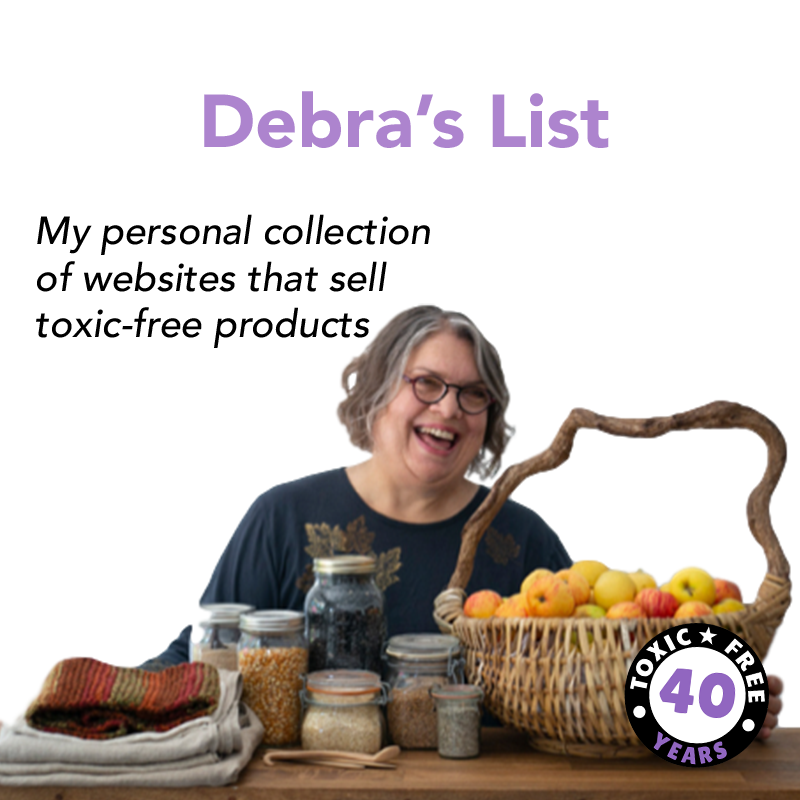
Kidde Carbon Monoxide Alarms
This link goes to Kidde alarms sold on amazon.com. Both models have digital displays so you can monitor carbon monoxide levels in your home.
What You Need to Know About Your HVAC and Indoor Air Quality Copy
 Today my guest is Judy Rachel, a Home Performance Professional specializing in third party, independent home energy audits, best green building practices specifications and HVAC system design. We’ll be talking about the basics of how your HVAC works, choosing correct filters, why we have indoor air quality problems and how to solve them, and how to get to know your HVAC system so you can use it properly. Judy writes and teaches building science / energy efficiency curricula for various community and city colleges, as well as for workforce training programs. She provides both classroom and hands-on trainings. She is a senior lead trainer for Efficiency First California, training contractors in the Home Performance with Energy Star curriculum. She is a lead trainer for Energy Conservation Institute’s Building Performance Institute (BPI) Certification trainings. Judy is President of the Eco-Home Network, a non-profit devoted to greening as many homes as possible. She is the field mentor for contractors participating in the Southern California Home Upgrade program. Along with being certified as a Building Analyst, Envelope Specialist, Heating Specialist and A/C and Heat Pump Professional through BPI, she is a field proctor for these certifications. As a HERS rater (Home Energy Rater) she does diagnostic testing, verifications and inspections for residential and small commercial buildings to ensure compliance with California’s Energy Code. Certified by Build It Green, she is a GreenPoint rater for new construction and a Certified Green Building Professional. Through National Comfort Institute she holds their Air Balancing and Carbon Monoxide & Combustion Certifications. Judy thinks the most amazing part of what she does is that by creating energy efficient homes she is actually able to improve the comfort, durability, indoor air quality, as well as, occupant safety within homes. www.greenachers.com
Today my guest is Judy Rachel, a Home Performance Professional specializing in third party, independent home energy audits, best green building practices specifications and HVAC system design. We’ll be talking about the basics of how your HVAC works, choosing correct filters, why we have indoor air quality problems and how to solve them, and how to get to know your HVAC system so you can use it properly. Judy writes and teaches building science / energy efficiency curricula for various community and city colleges, as well as for workforce training programs. She provides both classroom and hands-on trainings. She is a senior lead trainer for Efficiency First California, training contractors in the Home Performance with Energy Star curriculum. She is a lead trainer for Energy Conservation Institute’s Building Performance Institute (BPI) Certification trainings. Judy is President of the Eco-Home Network, a non-profit devoted to greening as many homes as possible. She is the field mentor for contractors participating in the Southern California Home Upgrade program. Along with being certified as a Building Analyst, Envelope Specialist, Heating Specialist and A/C and Heat Pump Professional through BPI, she is a field proctor for these certifications. As a HERS rater (Home Energy Rater) she does diagnostic testing, verifications and inspections for residential and small commercial buildings to ensure compliance with California’s Energy Code. Certified by Build It Green, she is a GreenPoint rater for new construction and a Certified Green Building Professional. Through National Comfort Institute she holds their Air Balancing and Carbon Monoxide & Combustion Certifications. Judy thinks the most amazing part of what she does is that by creating energy efficient homes she is actually able to improve the comfort, durability, indoor air quality, as well as, occupant safety within homes. www.greenachers.com
Audio Player

TOXIC FREE TALK RADIO
What You Need to Know About Your HVAC and Indoor Air Quality
Host: Debra Lynn Dadd
Guest: Judy Rachel
Date of Broadcast: October 30, 2014
DEBRA: Hi, I’m Debra Lynn Dadd. This is Toxic Free Talk Radio where we talk about how to thrive in a toxic world and live toxic-free. The first thing I want to tell you today – oh, besides the fact that it’s October 30 and it’s Halloween tomorrow – I should have on my website (and I doubt it), but if you had subscribed to my newsletter, I’ve been sending out different bits and pieces on the newsletter about how to have a less toxic Halloween.
There had been a few things that had come out, different organizations with things. But you might want to take a look at – there’s a website called HealthyStuff.org. They’ve just done a study of toxic chemicals in Halloween costumes and accessories and all those things for Halloween. So just go to HealthyStuff.org and take a look at what they had to say about the toxic chemicals in Halloween.
And you can also go to ToxicFreeTalkRadio.com and type in “healthy halloween” into the search box and you can listen to an interview I did with Annie Bond. We talked about different ways that we have had toxic-free Halloweens in the past and different things that you can do.
So I just encourage you to type in “halloween” or “green halloween”, “non-toxic halloween” in your favorite search engine and see what comes up because there’s a lot of things to know about how toxic Halloween can be and making it a less toxic occasion for your children.
So all that said, today, what we’re going to talk about is your HVAC system, which is ‘heating, ventilation and airconditioning’. I think that’s right, but my guest will correct me. We’re going to talk about indoor air quality.
And I decided to have this guest on because I was talking with her and she gave me so much information about my HVAC system that I didn’t know. I live here in Clearwater, Florida where we are in air-conditioning. My HVAC is on seven or eight months of the year. The things that I didn’t know, I thought all of you should know because if you have HVAC (as most people do), you need to know how it’s affecting your indoor air quality, what you can do. We’re going to talk about all these things.
My guest today is Judy Rachel. She’s a home performance professional specializing in third-party, independent home energy audits, best green building practices specifications and HVAC systems design. And so today, we’re going to be talking about the basics of how your HVAC system works, choosing correct filters, why we have indoor air quality problems and how to solve them and how you can get to know your HVAC system so that you can use it properly. So we’ve got a lot to talk about.
Hi, Judy.
JUDY RACHEL: Hi, Debra!
DEBRA: How are you today?
JUDY RACHEL: I’m doing great. How about you?
DEBRA: Good. And you’re in Los Angeles, right?
JUDY RACHEL: Yeah.
DEBRA: How’s the air quality there today?
JUDY RACHEL: Well, the air quality is just what it is in L.A. We’re a great, big city. I am in a valley where we have inversion layer. So it’s definitely got its good days and its bad days. Fall is definitely kind of a better season for us with the air quality. But all that being said, indoor air quality, studies are showing, is much worse than outdoor air quality even in cities like L.A.
DEBRA: Yes. And those studies have been going on for many, many years and we’ll talk about that.
I just wanted to say that I have a friend who lives in L.A. who is also a building scientist like you are. She does consultations about fixing your HVAC for indoor air quality purposes. But also, what was so interesting to me when I went to her house what a difference it made that I always thought I could just never live in L.A. But being in her house, the difference between the outdoor air quality and the indoor air quality was just amazing.
And of course, she lives in a completely non-toxic house. So she’s reducing her indoor [inaudible 00:05:43] source as she should. It made so much difference to not just have any old HVAC, but to be able to do the right thing and understand how it is. So I know it can make a huge, huge difference.
But before we get into the details, tell us how you got interested in this subject.
JUDY RACHEL: Well, I was actually searching very specifically for a job that I could be doing every single day of my life that I could feel good about, that was going to match up with my values of wanting to live a green, sustainable, non-toxic life. And in that search, I happened to kind of fall into building science.
I heard about home energy audits. I talked my way into a class on home performance and building science and I was lost. It’s absolutely fascinating. It’s amazing, the things that we don’t know or understand about the way our homes perform and the fact that in making a home energy efficient, we have all these wonderful byproducts. We get increased comfort, we get better indoor quality, we create more durable homes, we create healthier and safer homes.
So it just was this incredible revelation, “This is awesome! It’s fascinating. I could do this every day and wake up happy to be doing this.”
DEBRA: That’s really good. I’m so glad that you’re doing it because it is a field that people need to understand. It’s kind of technical. You explained it so clearly to me that I’m sure that the listeners are going to understand everything you say today.
So first, let’s start with explain the basics of an HVAC system.
JUDY RACHEL: Well, so basically, there’s actually two components to what we call an HVAC system. We have the component that we are actually conditioning the air in our home. And so that’s really the heating and air-conditioning component of it.
Typically, it’s best that it’s a completely separate system from the v portion, which is ventilation. The heating and cooling portion is conditioning our air. It’s supposed to be about comfort. And part of comfort is actually moisture removal in air-conditioning.
The v portion, ventilation is really about the contaminant and pollutants in our air and getting proper air changes through our house. It has its own two components. We have a source point ventilation where we’re actually removing the contaminants at a particular source.
So say in a bathroom where we have high moisture issues (showers, baths, that type of thing as well as odors), we want that sources removed. In the kitchen, we’re cooking. There’s combustion byproducts. We want those sources of contaminants removed.
And then we have the second component of ventilation, which is the whole house ventilation where we actually need to create air changes from the indoors to the outdoors, so that we get this body of air that moves through the house, so we actually can remove pollutants that might be building up in the home.
DEBRA: And that would include even things like if you think that you don’t have pollution (like I think I don’t have pollution in my house because I don’t have toxic chemicals), that would include things like the pollution that’s created when we breathe, when we exhale, things like dust mites that might be coming off your bad or…
JUDY RACHEL: Exactly!
DEBRA: Tell us about some of those pollutants that w might not be thinking of.
JUDY RACHEL: Right! And so the thing is is that dusts are very living. So even when we are making tremendous effort to not bring contaminants into our homes, the very fact of our existence in an enclosed space is creating – basically, we can call them contaminants. We are creating stale air. We’re breathing in the O2, we’re breathing out the CO2. We need to make sure that we have the right balance and mix of those things.
And then, our various cleaning supplies are releasing things. So, of course, if we’re trying to clean much more non-toxically, then there’s going to be less of that. But these things do build up. Just every effort we make – our skins are still shedding cells and if we have any pets, there’s dander. So there are just all kinds of things that are building up and basically just making the air stale when we have an enclosed environments, which is what our homes are. And in order for us to keep…
DEBRA: And we… go ahead.
JUDY RACHEL: Oh, I was going to say just so in order for us to keep our conditioned air conditioned in our houses, we do need to have an enclosed environment, so we need to make sure that we’re also getting the air changes.
DEBRA: Yeah, we need to go to the break, but I want to ask you a question about that when we come back. You’re listening to Toxic Free Talk Radio. I’m Debra Lynn Dadd. My guest today is Judy Rachel. She’s a home performance professional specializing in energy and indoor air quality. We’ll be right back.
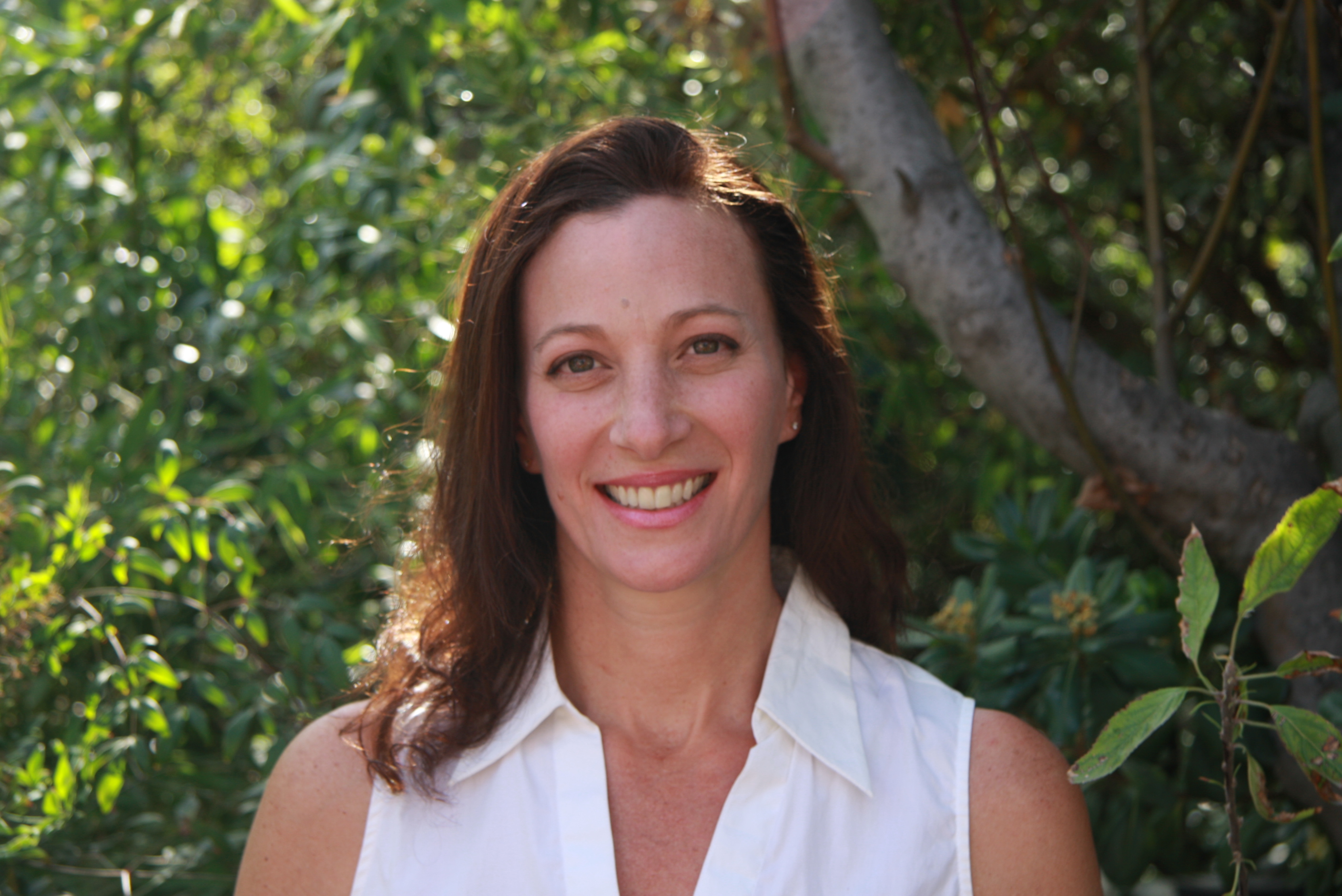
DEBRA: You’re listening to Toxic Free Talk Radio. I’m Debra Lynn Dadd. My guest today is Judy Rachel. She’s a home performance professional specializing in both indoor air quality and also energy efficiency. These two things go together and I’m so interested in that balance.
So Judy, would you just tell us more about – I really want us, all the listeners and myself, to understand that the HVAC system, there’s this balance going on in our homes where we need to have the air heated and cooled in an energy efficient way, which means seal up the house.
That’s one of the reasons why we have indoor air quality problems now. This whole thing about indoor air quality, when I started writing it, it wasn’t even a phrase. It didn’t exist 30 years ago when I started writing.
I remember that then, there was the energy crisis. And after the energy crisis, they said, “We need to seal up all the houses to retain the heat and cooling and reduce the amount of energy we used.” And that’s when we started having indoor air quality problems because prior to that, houses leaked around little cracks and windows and all these things. And now, there was no longer the air exchange.
So tell us more about these opposites of needing to seal the house for energy efficiency, yet needing to have ventilation for indoor air quality.
JUDY RACHEL: So first, I want to say that there’s a little bit of a fallacy that we didn’t have the indoor air quality problems when our houses were leakier.
What’s happening in a leaky building is that the air exchanges are completely random and they’re from random sources. And because of the way physics work, hot moves to cold, wet moves to dry, the natural forces that go on particularly in a leaky house are that we get cold air coming in down low and we get warm air trying to exit up high. It creates this whole invective loop and pressure differentials that are happening from inside to outside.
And so if I’m bringing air in from down low in my climate air, that’s from raised foundation. So I’m sitting on top of a bunch of dirty, disgusting earth that very often has all kinds of rodents and raccoons and possums, skunks and everything else that get underneath my houses and…
DEBRA: Me too, me too.
JUDY RACHEL: …and/or even moist basements and things like that and in other parts of the country. So we’re bringing in air from those really horrible places into our home. And then it’s also trying to exit out the top of our home.
And then in the summer, it actually reverses. And so now, I’m bringing in air from my attic, which is another place where there’s all kinds of stuff going on up there that I really don’t care to be breathing that air.
So in our leaky houses, the air exchanges were much quicker, but they were still coming from sources that I really didn’t want to be breathing that air.
Then there’s also the portion of I basically built a home to shelter myself from outside conditions because I’m just not as hardy as, say, my predecessors in human history. So I want some comfort, I want an enclosure to keep me safe and to keep me comfortable.
So now, I’ve put in a forced air system. So I’m heating and cooling my air, but if the house is leaky, then my conditioned air is coming and going. The outside air is coming in and it’s messing up this air that I’m paying to condition.
So that’s where a lot of the energy efficiency comes in. If I have a leaky building and I’m trying to heat or cool it, I’m spending much more money heating and cooling that air because it is randomly coming and going and I don’t have any control over that.
Then the way that I deliver the air into the house is through this air distribution system, the air ducts. If those air ducts are leaky, then I’m bringing in this unconditioned air that’s also very typically from the crawl spaces that my ducts are running in or the attic if that’s where my ducts are running through or the walls if that’s where my ducts are running through.
So I’m losing my conditioned air, I’m bringing in unconditioned air and I’m also bringing pollutants in if I don’t make sure that my air distribution system, that those ducts are actually tight.
DEBRA: Yeah.
JUDY RACHEL: So they have both an effect on the energy efficiency of the equipment, of my home, of my energy bill, as well as my indoor air quality.
DEBRA: So one of the things that I didn’t understand several years ago was that I always assumed that air was coming in and out of the house. But I understand that in most, if not all HVA system, what it’s doing is recycling air.
And so the key thing of interest for me about that aside from the fact that we’re probably depleting oxygen is that when you’re recycling the air, then the pollutants that people who aren’t living in toxic-free houses like you and I, just the average American person or the average person in the world, they’ve got all these toxic chemicals going on.
They’re cleaning with toxic chemicals and spraying pesticides and fire retardants on the sofa and all these things and there’s no place for those pollutants to go and they just build up and build up and build up and build up over time to very toxic levels in the home.
So it’s not just what are the toxic chemicals, it’s toxic chemicals plus no ventilation.
So could you just explain about the recycled air and how then does the v part of HVAC work to be making these air exchanges?
JUDY RACHEL: Right! So yes, our forced air system really should just be moving inside air through the house. They shouldn’t be exchanging outside air at all. That’s part of what I was just saying in terms of leaky duct system, is that the force air system in our house and the ducts that are bringing that air to the various rooms is really like the circulatory system of our body. There shouldn’t be an exchange from inside to outside through that system.
So the heating and cooling portion is to make us comfortable, it’s to condition our air and it’s also to remove moisture in climate where moisture is an issue.
DEBRA: Before you go on, let’s go to break and then we’ll put it all together when we come back so you don’t get interrupted by the commercial.
JUDY RACHEL: Okay, great!
DEBRA: You’re listening to Toxic Free Talk Radio. I’m Debra Lynn Dadd. My guest today is and Judy Rachel from Performance Professional. Her website is GreenAchers.com”>GreenAchers.com. We’ll be right back.
DEBRA: You’re listening to Toxic Free Talk Radio. I’m Debra Lynn Dadd. My guest today is Judy Rachel. She’s a home performance professional specializing in indoor air quality and HVA systems.
So Judy, tell us a little more about – we were discussing about how the system recycles the air.
JUDY RACHEL: Great! And so, to recap, the heating and air-conditioning portion of our heating and cooling system, for most of us, was designed and installed to actually be a closed loop within our home. They were not installed to even clean our air. They purely are installed to circulate the air and to condition the air in the house and to remove moisture.
So then that leads us to the ventilation portion of HVAC. And that ventilation portion is very specifically about exchanging indoor and outdoor air and removing contaminants and pollutants in a controlled way (so not random like in a leaky house), in a controlled amount and is absolutely meant to increase the comfort and health of the occupants within the home.
So they’re two very separate systems and…
DEBRA: But they’re all together in one thing. I mean, somebody buys the HVAC and they’re going to get both, right?
JUDY RACHEL: Well, no. So the contractor…
DEBRA: This is a very important point. This is so important.
JUDY RACHEL: Yes.
DEBRA: Okay, go ahead.
JUDY RACHEL: Yeah, so the contractors are called HVAC because we’re still dealing with the movement of air and the principles of how air moves and the pressures that make air move. It moves in the temperature differences that work within air movement and the fact that we typically are distributing – well, we’re distributing air movement through duct systems. They’re motorized, there are fans and blowers.
And so the systems are absolutely within the realm of the same brain. The contractor that’s been trained to do the heating and cooling would very naturally be able to understand how a ventilation system would need to be designed and installed. So the two things are similar in the way that we’re using air, they’re different systems.
So if we want to use your heating and cooling system as a ventilation system, then it needs to be designed that way and we need to now start having some air exchanges from inside to outside happening with it.
None of our systems actually clean the air per se. So that’s not what’s going on with this system. Basically, to remove pollutants is not about scrubbing the air or cleaning it. It’s exchanging it with enough ambient air that is not going to have the parts per million of the pollutants in it.
So to some extent, we’re diluting. We want to truly dilute as in getting rid of it and having a much better body of air available for us.
DEBRA: But then, so this now leads us into two different areas. I just want to mention them both and then go in a certain direction.
So the first thing that I want to say is that if you’re ventilating in, say, Los Angeles, you’re bringing in the outdoor air, which is polluted. But as we said in the beginning that many studies have shown that indoor air pollution is worse than outdoor air pollution because you’ve got the outdoor air pollution and you’ve also got the pollution being produced by all the toxic things and breathing and all those things that are indoor.
And so, the second area then is about filters. I know that we think that if we have HVA systems, we’re putting in the filters in order to filter the air, so that it’s less toxic. But you told me something different. So tell us about filters.
JUDY RACHEL: Right. So the filter in the heating and cooling portion of our system is actually to protect the mechanical components of the system itself. It’s to protect the fan that’s blowing the air and it’s to protect the coil that is creating our [inaudible 00:31:34] air-conditioning, the coil that’s creating the cooling air, that’s taking the heat out of the air. So we need to keep those components clean so that they continue to function well and that whole system is able to function well and efficiently.
So that is truly why there are filters in the heating and cooling portion of our forced air system. It’s for the protection of the systems themselves is not actually to say scrub our air or filter the air for our respiratory health.
DEBRA: Okay! So then, there’s things that consumers need to know about when they go buy the filter because I know that I just go down to Lowe’s or Home Depot or someplace like that and I just was buying the filters that had the highest rating for removing particulates. But there’s reason why we shouldn’t do that. So tell us about that.
JUDY RACHEL: The filters in our system create a resistance to air movement and our systems are based on air moving. And there’s basically a certain budget. Like we have a budget for buying our groceries or for anything else, there is a budget for actually the motor and the system as to how much air it can move and how much air it can move consistently and effectively.
And since we’re trying to deliver the energy, the conditioned energy into the various rooms with the air, we know very specifically how much air we need to be delivering through the whole system and how much needs to go to these particular rooms.
And so every time I put something in the air stream (such as a filter), I am creating some resistance to air flow. And there is not a very big budget for what any of these fans can use. And I’ve got this entire duct system that I have to [inaudible 00:33:36], as well as the coil that I need to put on and so my budget gets used up by all of these things. The filter needs to be only a very small portion of that budget or I basically completely short circuit the entire very expensive system that I have installed and that’s supposed to be keeping me comfortable in my home.
DEBRA: So we need to go to break in just a few seconds. So tell us what is the guideline for what a consumer needs to do to choose the right filter?
JUDY RACHEL: Well, you need to know what the pressure drop is, how much resistance to air flow the particular filter is that you’re putting in a system and if your system can handle that amount of resistance to the air flow.
DEBRA: So that would be that you should use the filters that your contractor recommends. But if you don’t have a contractor (like for me, I just moved into a house and I have no idea which was it), so we’re going to talk about what to do in that case when we come back. And also, we’re going to talk about indoor air quality.
You’re listening to Toxic Free Talk Radio. I’m Debra Lynn Dadd. My guest today is Judy Rachel from Performance Professional in the field of energy efficiency and indoor air quality with HVAC. We’ll be right back.
DEBRA: You’re listening to Toxic Free Talk Radio. I’m Debra Lynn Dadd. My guest today is Judy Rachel. She’s a home performance professional specializing in balancing energy efficiency and indoor air quality. Her website is GreenAchers.com like ‘ache’, ache like your arm aches or your head aches or your lungs ache.
JUDY RACHEL: Exactly! Yeah, I think of it as “aching to be green”.
DEBRA: “Aching to be green,” good. That’s a good way to remember it. Okay! So if I don’t have any information from the contractor who installed my HVAC system, what is the quick answer about what I should do in order to find out what is the right filter for me?
JUDY RACHEL: Well, the quick answer is that it’s important to have a filter in your system to keep any dust and debris out of your system. So the least expensive filter that’s out there that will fit in the slot is going to be your best bet just to make sure you have a filter in your system.
But then really, the only way that you can possibly find out is a contractor that can specifically leave you with filters so that you can replace those. You would need a contractor to come in and actually measure what’s called the ‘static pressure’, the pressures on the system and to let you know what exact filter you actually can use for your system.
So even [inaudible 00:40:20] filters out there and they might fit into the slot, they absolutely can short circuit your system if they’re creating so much resistance to air flow. And it’s not something that you’re necessarily going to feel at the grill, so you really need to have somebody who can come in and take the measurement across the filter.
DEBRA: Yeah, I actually just had a new air-conditioner installed a few months ago. My contractor did not leave any filters with me or say anything about it. He just installed the filter that I bought from Home Depot. So I’m going to go back to my contractor and ask him specifically about this. He did a really good job installing it, but he just didn’t say anything about this.
And actually, listeners, the first time I’ve even heard about this was from Judy. It makes total sense to me that you want to have the best air movement that you can and protect your system and not have it all fall apart.
So tell us about indoor air quality problems. What are the source of indoor air quality problems and what’s the appropriate way to handle them if we can’t just put a filter on our HVAC and say, “Oh, we’re handling our indoor air quality problems.” People should not assume that they’re handled just because they have a filter in the HVAC.
JUDY RACHEL: Yeah, the indoor air quality issues are myriad and they definitely can come from indoors, outdoors and from things that we bring into our home. So kind of a short, quick, dirty list is you radon issues, there’s just environmental tobacco smoke, biological contaminants such as molds or animal dander or dust mites, bacteria and viruses.
Stoves, heaters, fireplaces and chimneys bring contaminants into our homes. The various household products that we have, formaldehydes in so many of the materials that are used to build our cabinetry and furnishings in our homes, pesticides, asbestos, lead and all the various VOC’s, adhesives, carpets, paint, upholstery, dry cleaning, bringing in dry cleaning to your home. Just washing outside, you track things in from the bottom of your shoes. Synthetic lawn and garden fertilizers as well as pesticides.
So unfortunately, the pollutants and contaminants comes from so many sources. And then, of course, when we do things like take showers or just breathe or cook, we’re also creating moisture. And then all those things that the moisture can actually – those molecules that moisture can attract. And so we want to make sure that we get those things out of our homes as well. And so that’s absolutely where ventilation comes into play.
And so some of the ventilation that we really need to do needs to be straight exhaust. There’s just certain areas of our homes where we need to be exhausting air out of our homes (particularly bathrooms and kitchens). They’re incredibly important.
DEBRA: And every house comes with exhaust fans unless it’s a really old house before they were required by law. But isn’t it like [inaudible 00:43:44] to not have those exhaust fans? So the thing is people have to use them. You need to use your exhaust fans.
JUDY RACHEL: Yeah, it’s so important.
DEBRA: You have to turn them on.
JUDY RACHEL: Turn them on. We need to use them. And so another thing is that there’s new ones that are so wonderfully quiet. So if you don’t turn it on because it’s just too noisy, look into getting one of the ones that has – it’s called the ‘sone rating’, that’s the noise rating, so a lower sone rating so that you don’t mind having it on. But they are essential to use.
And really opening doors and windows as pleasant as it seems and can feel, there’s definitely certain times of the year when most of us can’t open our doors and windows. And the other thing about opening doors and windows is that it’s one thing and it’s not controlled. We don’t know for sure that it’s actually working. If there isn’t a temperature difference from outside to inside, if there’s no wind, if it’s a still day, then there’s actually no movement happening across a door or window.
DEBRA: Wow.
JUDY RACHEL: I love opening my doors and windows, but I also know that that’s more a connection of myself to the outdoors than it is about truly getting ventilation in my household.
DEBRA: I haven’t thought about that.
JUDY RACHEL: Yeah. And so mechanical ventilation systems are just so important to know that I’m actually getting the controlled movement of air into and out of the house that I need to have happen. And in those systems, I absolutely want to design in a filter for those systems, so that I’m not bringing in excessive dust or particulates and other things from outdoors.
But once again, it is about air movement and it’s about air movement with a fan and through a duct system, so I still need to be concerned about is that filter restricting too much air flow. That’s the other part of it. Any of our systems that have filters, it’s really important to change them regularly.
DEBRA: So we’re talking about these two different systems and I’m guessing that if you had a properly designed HVAC system that there would be these two systems operating independently, but together. So that would mean two different kinds of filters, one to keep the conditioning part system clean and the other one, in the ventilation that might be removing pollutants. Is that right?
JUDY RACHEL: Yes. So in the ventilation system, I’m still definitely concerned about whatever fan it is and blower motor that I have in that piece of equipment. So I want to keep it clean. But in the fact that I am exchanging outdoor air with indoor air, I do want it to fit better as a filter that’s going to be stopping any pollutants that I know for sure might be coming in from outdoors (basically, kind of dusty type things in particular). I definitely want to make sure that the filter is good enough that insects aren’t going to be able to bypass it or [inaudible 00:47:09] it and things like that.
DEBRA: Of course! Of course, yes.
JUDY RACHEL: So that filter, I’m going to look at and design so that I’m doing better filtration with that filter rather than just trying to protect my motor with that filter for that system by…
DEBRA: So when you…
JUDY RACHEL: Go ahead.
DEBRA: We only have a couple of minutes left, so I want to make sure I ask this question.
JUDY RACHEL: Yes.
DEBRA: So again, when you’re going down to Home Depot or Lowe’s or whatever store you buy your filter and there’s all these filters on the shelf, most of those filters, if not all are going to be the filters that are keeping your system clean and you’re just going to put them on the slot. Where does this other filter go and how do you replace it?
JUDY RACHEL: So there actually should be a little bit of a filter over your exhaust fan (in your kitchen in particular). So you should make sure that that stays clear of grease and that it’s just right there and accessible.
DEBRA: Right.
JUDY RACHEL: If you actually have a whole house ventilation system put in to your house, then that’s one of the things that our ventilation contractors need to help us with. They need to help those filters to be accessible for us.
And that’s the same thing actually with the heating and cooling portion as well. They still do need to be accessible for us. And that’s why a lot of times, we put them where the return air (where the air goes back into the system) and so there’s a little pop open so we can just pop a filter back in and have that accessible to us.
So that really is something that our contractors need to help us with, to have to call them in every three months or something to change the filters. If that’s unfeasible, we need to be able to take care of that ourselves. Otherwise…
DEBRA: So if I don’t know that there’s a ventilation system like my conditioning system, but that I have fans in the kitchen and in the bathroom, I might not even have a ventilation system?
JUDY RACHEL: Yes. In most of our buildings (unless you’ve had some kind of energy retrofit done), you probably don’t have a whole house ventilation system. You’ve got your exhaust fans.
DEBRA: Okay, good. I’m sorry, I have to interrupt you because we’re coming to the end of the show. We only have a few seconds left.
JUDY RACHEL: Okay.
DEBRA: This has been so interesting and I want everybody to remember that I’m now making transcripts of all the shows. And so in a few days, you can go to ToxicFreeTalkRadio.com and look at the transcript of the show, read it.
You can go to Judy’s website, GreenAchers.com. And that’s like “aching to be green.” This is Toxic Free Talk Radio. I’m Debra Lynn Dadd. Be well.
Feit
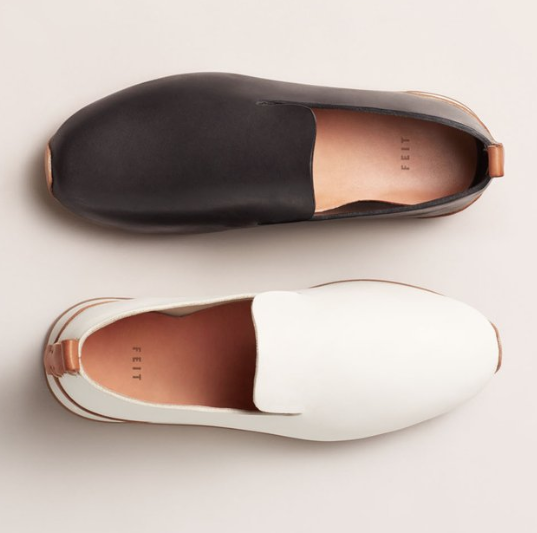 Shoes for women and men made with exceptional craftsmanship and materials. “In 2004 FEIT [fight] was born as a response—an evolution of consumerism and production that moves away from volume and excess, and towards quality and sustainability. FEIT footwear is built for longevity, from natural materials via human construction. All FEIT footwear is hand sewn and hand lasted by a master shoe maker. Few makers are skilled enough to produce footwear in this manner, hence only limited numbers can be produced…FEIT adheres to a strict policy of using biological materials and natural treatments whenever possible. Natural materials breathe, patina and become one with the wearer. Materials page.
Shoes for women and men made with exceptional craftsmanship and materials. “In 2004 FEIT [fight] was born as a response—an evolution of consumerism and production that moves away from volume and excess, and towards quality and sustainability. FEIT footwear is built for longevity, from natural materials via human construction. All FEIT footwear is hand sewn and hand lasted by a master shoe maker. Few makers are skilled enough to produce footwear in this manner, hence only limited numbers can be produced…FEIT adheres to a strict policy of using biological materials and natural treatments whenever possible. Natural materials breathe, patina and become one with the wearer. Materials page.
Undandy
 These shoes for men are a cut above ordinary shoes. Their about page starts with this quote “A man who works with his hands is a laborer; a man who works with his hands and his brain is a craftsman; but a man who works with his hands and his brain and his heart is an artist.” Made from vegetable tanned leather, there are many styles and colors to choose from…you can customize any pair and even design your own! About the leather.
These shoes for men are a cut above ordinary shoes. Their about page starts with this quote “A man who works with his hands is a laborer; a man who works with his hands and his brain is a craftsman; but a man who works with his hands and his brain and his heart is an artist.” Made from vegetable tanned leather, there are many styles and colors to choose from…you can customize any pair and even design your own! About the leather.
District Leathers
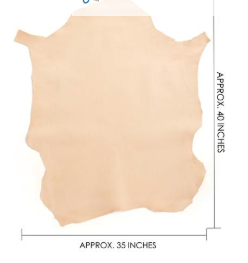 Vegetable-tanned hides for creating your own leather projects. In addition to the vegetable tans link here, also see the “cow hides” and lamb hides” menus and choose “vegetable tans.” See their very informative Leather Buying Guide . Free swatches. “Vegetable tanned leathers are tanned using strictly organic materials such as tree bark. They possess warm deep colors. As veg-tan leather ages, it absorbs the light, oils, and air that it is exposed to which cause their colors to become more rich.”
Vegetable-tanned hides for creating your own leather projects. In addition to the vegetable tans link here, also see the “cow hides” and lamb hides” menus and choose “vegetable tans.” See their very informative Leather Buying Guide . Free swatches. “Vegetable tanned leathers are tanned using strictly organic materials such as tree bark. They possess warm deep colors. As veg-tan leather ages, it absorbs the light, oils, and air that it is exposed to which cause their colors to become more rich.”
Marlondo Leather
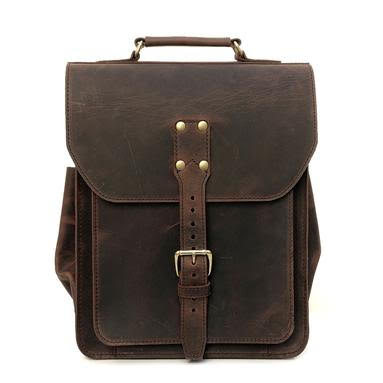 complete range of leather goods—including purses, backpacks, travel gear, and accessories—handmade individually by artisans using vegetable-tanned leather. Classic styles, reasonable prices. About their leather.
complete range of leather goods—including purses, backpacks, travel gear, and accessories—handmade individually by artisans using vegetable-tanned leather. Classic styles, reasonable prices. About their leather.
Etsy Vendors of Vegetable-Tanned Leather Purses
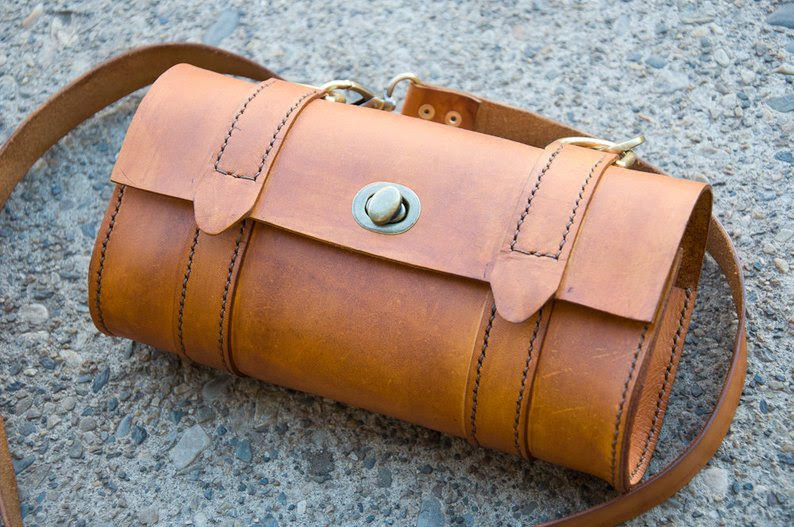 I had to include this because there are so many small artisans now working with vegetable-tanned leather that it was a joy for me to see their creations. You’ll find unusual designs here as well as traditional classics. Note the country items are shipped from as they are not all use. But here’s where you’ll find vegetable-tanned leather purses and accessories at prices well below other sources. Note: This is a search results page on Etsy for “vegetable-tanned leather purses.” Try reaching on “vegetable0tanned leather for other items.
I had to include this because there are so many small artisans now working with vegetable-tanned leather that it was a joy for me to see their creations. You’ll find unusual designs here as well as traditional classics. Note the country items are shipped from as they are not all use. But here’s where you’ll find vegetable-tanned leather purses and accessories at prices well below other sources. Note: This is a search results page on Etsy for “vegetable-tanned leather purses.” Try reaching on “vegetable0tanned leather for other items.
Frank Clegg
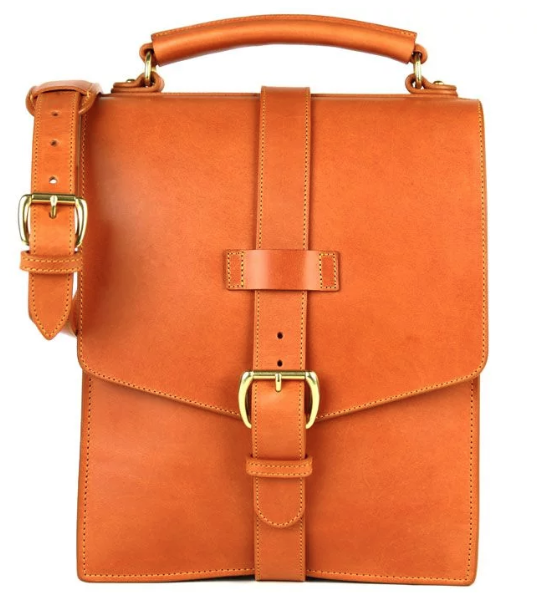 Fine leather goods handcrafted in the USA. These are very high quality and very expensive. About the leather.
Fine leather goods handcrafted in the USA. These are very high quality and very expensive. About the leather.
GDC/Building For Health
 The global leader of healthy home material supply, specializing in interior finishes and furnishings such as AFM Safecoat Paints and others,, toxin-free flooring, custom air purification systems and solutions, and other nontoxic building products. Healthy building expert Andrew Pace has over 25 years experience in the education of home health and human wellness. With over 20,000 satisfied clients all over the world, Andrew has a keen awareness of the issues relating to chemical sensitivity, green building, mold remediation and toxicity reduction.
The global leader of healthy home material supply, specializing in interior finishes and furnishings such as AFM Safecoat Paints and others,, toxin-free flooring, custom air purification systems and solutions, and other nontoxic building products. Healthy building expert Andrew Pace has over 25 years experience in the education of home health and human wellness. With over 20,000 satisfied clients all over the world, Andrew has a keen awareness of the issues relating to chemical sensitivity, green building, mold remediation and toxicity reduction.
Scarf Shop
 Long and luxurious scarves made from organic or conventional cotton or wool,dyed by hand in small batches in Minneapolis, MN. Low impact materials and methods are used whenever possible. Kettle dying in small batches with water based dyes gives fabric a rich and mottled appearance. These are gorgeous scarves. Lots of beautiful colors.
Long and luxurious scarves made from organic or conventional cotton or wool,dyed by hand in small batches in Minneapolis, MN. Low impact materials and methods are used whenever possible. Kettle dying in small batches with water based dyes gives fabric a rich and mottled appearance. These are gorgeous scarves. Lots of beautiful colors.







